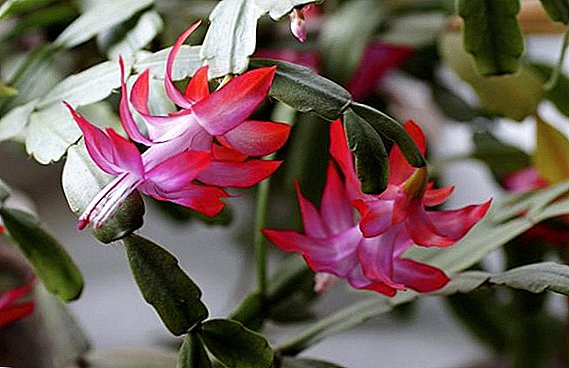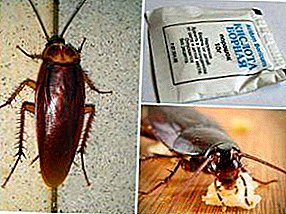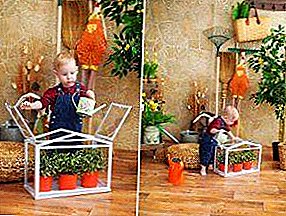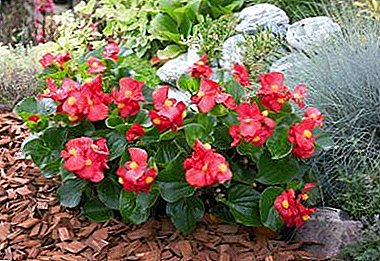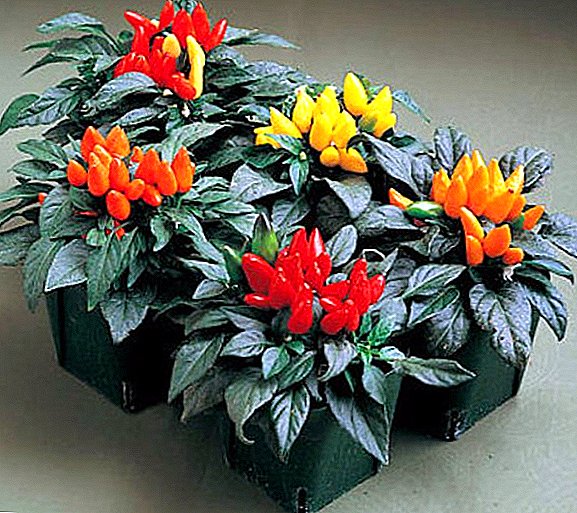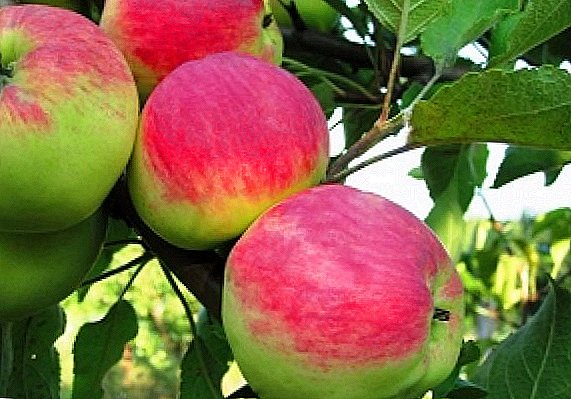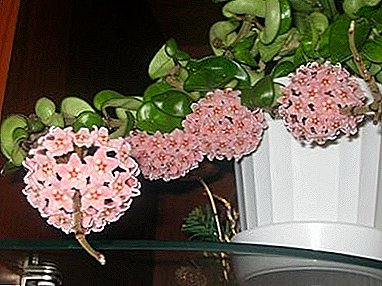
Hoya or wax ivy is a homemade plant for vertical decoration. In nature, it can be found on forest trees and on the mountainous rocky slopes of India, South China and Australia.
Characteristic and description
Hoya Compact is an evergreen vine. Its dark green leaves are oddly twisted and seem to be glossy (which is why it is called “wax”). Small pink flowers, similar to asterisks, are collected in inflorescences, umbrellas.
Home care
Landing

For hoya immediately need choose a permanent place: she endures frequent changes very hard, can even lose foliage and buds.
Therefore in the summer it is not necessary to carry it out on the air (on the balcony or on the terrace). But to regularly ventilate the room in which wax ivy has settled will be useful. If the plant is small, it can be watered with warm water, while washing the leaves.
Transfer
Hoya loves peace, but once every two or three years, when the roots are completely entangled with an earthy lump, it is still necessary to replant it.
If you want to achieve active flowering, should choose a close pot for her. But to accelerate the growth of shoots need on the contrary, plant hoya in a more spacious container.
Priming
Hoyu will suit any soil, even poor, because in nature this ivy grows even on stones. You can prepare a mixture for it, which will consist of equal parts. leaf, peat and sod land, as well as humus and sand. Also suitable clay-sod, leaf and greenhouse land in a ratio of 2: 1: 1. You can add natural sphagnum moss and crushed tree bark. The easiest option: to purchase a substrate for palm trees or orchids for hoy - they have the right composition.
.
Watering
Young plants need to be watered moderately, in ordinary mode.. When they reach the age of two, hoya can be transferred to scanty watering. In the summer it is moistened as the land in the pot dries. In winter, watering should be reduced, it will favorably affect the activity of flowering. A lack of moisture adult wax ivy tolerates very firmly, but the young can dry out the roots.
Air humidity
In the summer, spraying with settled water is possible. When the plant becomes large, spraying can be replaced with a warm shower (at any time except for flowering). It can be quite abundant, but after that it is necessary to allow water to drain from the pot.
Lighting

Hoya loves moderate but not direct light. She is comfortable on the eastern or western windows.
In winter You can place it on the southern windowsill.
But in the summer it is better to take care of it from excessive sun, otherwise the leaves will dry out.
Thermal mode
During the active period, the most suitable temperature for hoya is 17-25 degrees of heat. In winter, the plant does not sleep, but does not grow, so at this time of year the plant is comfortable at +15, and a decrease to 10 degrees is possible.
Fertilizer
Hoiu need to be fed during the active period, starting in March. It is recommended to do this. 1 time in 2 weeks - mineral fertilizer or once a month - organic. Good for these purposes feeding with the content of potassium. It is not recommended to feed hoyu more often than the indicated dates: she will not like the oversupply of microelements in the soil. Therefore, in winter it is not recommended to fertilize the soil for wax ivy.
Breeding
For reproduction should use already flowering plants.
- The most common way is reproduction by cuttings, which are cut between the nodes. Each of them must have at least two pairs of leaves. You can root them in water or sand and peat sweep. At a temperature of about 20 degrees, the roots should appear within 3-4 weeks.
- To propagate hoya stem layers, On the shoots of an adult ivy, they make a small incision, wrapping it with wet moss and a transparent film. When the roots appear, a part of the shoot along with the roots should be cut with a sharp tool (knife or razor) and put in a pot.
Bloom
With proper care and sufficient lighting Hoya will bloom. As soon as the buds appear, it cannot be moved to prevent them from falling off. After ivy blooms, flower stalks do not need to be cut: next year new flowers will appear directly on them, as well as on new growths.
Pruning

New shoots at hoi kampakt appear from the root. Too long or sprouts that have lost their decorative appearance are boldly cut off. In addition to creating a harmonious form, it promotes good flowering.
Smell
Wax ivy flowers have an interesting scent. Immediately after the flowers bloom, they exude a bitter smell, the next day honey and coffee notes are added to it.
Growth rate
At first, the little hoya will not grow too fast, but in time it will “pick up speed”. New whips with new flower stalks appear from the roots rather quickly.
Life expectancy
With proper care, Hoya Compact will live a long and active development.
Diseases and pests
Hoya, who lives in favorable conditions, is very resistant to both diseases and pests. But with the wrong care on the plant can start scouts, mealybugs and the ubiquitous red spider mites. You can get rid of them with the help of appropriate chemicals. It is necessary to process each lash separately and very carefully, as it is rather difficult due to the curved leaflets. Some funds allow strait and soil, as pests can be in the ground. Follow the instructions included with the chemicals.
Among the possible diseases hoya - root nematode. To prevent its occurrence, the ground must be disinfected before use, for example, by steaming.
Thanks to its unpretentiousness and spectacular appearance, hoya compact will great decoration for any room. Her fancy blooming garland vines will enliven both home and office interior.
A photo
Next you can see the photo of Hoya Compact:






